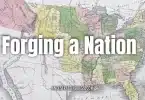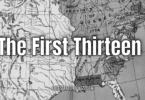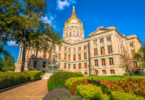The capital of Florida is Tallahassee, a city deeply rooted in history and political significance. It serves as the county seat of Leon County and stands as the largest city in the Florida Panhandle. With a population of approximately 193,500, Tallahassee is the seventh-largest city in Florida and 126th in the United States. Despite not being as populous as Miami or Orlando, Tallahassee plays a crucial role as Florida’s political hub, housing the state government, the Florida Supreme Court, and the Governor’s Mansion. It is also home to two major universities—Florida State University and Florida A&M University—making it a prominent college town with a student population of nearly 70,000.
Beyond its governmental and educational significance, Tallahassee is a center for legal and lobbying firms, professional associations, and state agencies. In recognition of its civic engagement, the National Civic League awarded Tallahassee the All-American City Award in 2015. However, long before it became Florida’s political heart, Tallahassee was home to indigenous cultures that shaped its landscape and history.
Early History: From Native Lands to Spanish Exploration
The area that is now Tallahassee was inhabited by indigenous peoples for thousands of years before European arrival. The Mississippian culture, present from around 1200 AD, left a lasting legacy in large earthwork mounds, several of which still exist at Lake Jackson Archaeological State Park. These mounds, built for ceremonial and political purposes, indicate that the region was a thriving center of Native American life.
In the early 1500s, Spanish explorers arrived in Florida, establishing St. Augustine as the first European settlement. In the winter of 1538–1539, Hernando de Soto’s expedition camped in the Tallahassee area at the Apalachee village of Anhaica. Archaeological findings suggest his camp was within half a mile of where the Florida State Capitol stands today. It is also believed that the first recorded Christmas celebration in the present-day United States occurred at de Soto’s camp in Tallahassee.
Tallahassee originates from the Muskogean Native American language, meaning “old fields” or “old town.” In the 18th and early 19th centuries, they arrived in the region as the Creek and Seminole peoples were displaced from Georgia and Alabama. They adopted the name, referring to the open lands once occupied by the Apalachee.
During the First Seminole War (1817–1818), Andrew Jackson led military campaigns there. In November 1817, he burned the Native village of Fowltown to the ground after its leader refused to comply with relocation orders. Jackson returned in March 1818, capturing two Native American leaders. This conflict ultimately contributed to the United States acquiring Florida from Spain in 1821 through the Adams-Onís Treaty.
The Selection of Tallahassee as Florida’s Capital
Florida was originally divided into two separate Spanish territories: East Florida, with its capital in St. Augustine, and West Florida, with its capital in Pensacola. When the United States took control of Florida in 1821, the first territorial legislative sessions were held in both cities. However, due to the vast distance between St. Augustine and Pensacola—nearly 400 miles apart—traveling between them was arduous. A new, centrally located capital was needed.
In 1824, Tallahassee was chosen because it was roughly midway between St. Augustine and Pensacola. It was still a tiny frontier settlement at the time, but it quickly grew into an official town. The first legislative meeting in Tallahassee took place in a crude log cabin, marking the beginning of its role as Florida’s permanent capital.
The Marquis de Lafayette, a hero of the American Revolution, was granted U.S. citizenship and 36 square miles of land in Tallahassee as a reward for his service. His land grant helped shape the city’s early development.
By 1845, when Florida achieved statehood, a formal Greek Revival-style Capitol was constructed to serve as the state’s legislative seat. Over time, as Florida’s population and government expanded, the need for a larger, more modern capitol building arose.
The Florida State Capitol: A Tale of Two Buildings
The original Florida State Capitol, completed in 1845, was designed in the Greek Revival style, featuring white columns, a symmetrical façade, and a red-and-white striped dome added in 1902. This building, now called the “Old Capitol,” witnessed pivotal moments in Florida’s history, including Civil War debates, Reconstruction-era governance, and the state’s growth into the 20th century.
As Florida’s government expanded, the old Capitol became inadequate for the growing needs of the legislature. In the 1970s, a modern new Capitol complex was commissioned. The current Florida State Capitol, completed in 1977, is a 22-story tower rising 345 feet into the Tallahassee skyline, making it the tallest capitol building in the United States. Designed by architect Edward Durell Stone, the new structure is a stark departure from the classical design of its predecessor, embracing modernist and functionalist architecture.
Key architectural features of the new Florida State Capitol include:
• A sleek, rectangular, high-rise design intended to reflect the modern era of government.
• A grand plaza incorporating the preserved Old Capitol at the front, symbolizing Florida’s historical continuity.
• Observation decks on the 22nd floor offering panoramic views of Tallahassee.
• Chambers for the House and Senate, located in adjoining low-rise domed buildings flanking the tower.
Despite its controversial departure from traditional capitol designs, the modern structure provides space for Florida’s growing legislature and administrative offices. The Old Capitol, meanwhile, has been meticulously restored to its circa 1902 appearance and now operates as a museum, preserving Florida’s political history.
Tallahassee’s Role in the Civil War and Beyond
During the Civil War, Tallahassee was the only Confederate state capital east of the Mississippi River that was never captured by Union forces. The Battle of Natural Bridge, fought in March 1865, successfully repelled Union troops attempting to seize the city. This makes Tallahassee unique among Southern capitals, as it was neither occupied nor burned during the war.
After Reconstruction, the city grew as a center for cotton production and commerce, relying heavily on enslaved labor before the Civil War. Over the years, Tallahassee transitioned from an agricultural hub to a government, education, and research center fueled by its status as the state capital.
Tallahassee’s selection as Florida’s capital was driven by geography and practicality, but over the centuries, it has become more than just a midpoint between two cities. Its rich indigenous history, role in Spanish and American expansion, and enduring political importance make it a fascinating chapter in Florida’s story. The Old and New Capitol buildings stand as testaments to this history, embodying Florida’s heritage and modern governance.
Today, Tallahassee remains Florida’s political, educational, and historical hub, offering visitors a blend of preserved history, architectural landmarks, and the workings of a dynamic state government.






